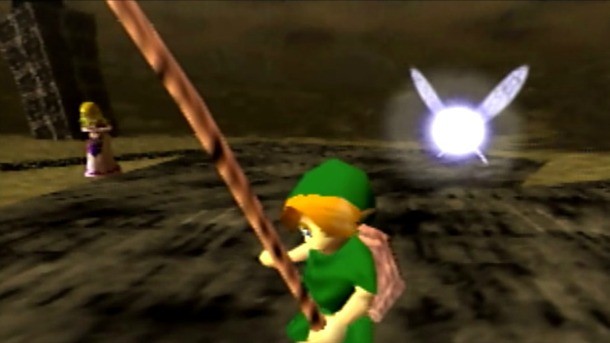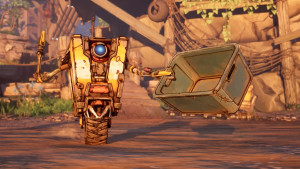Practical Imperfections – How Speedrunners Turn Glitches Into Entertainment

On July 20, speedrunner Cosmo Wright beat The Legend of Zelda: Ocarina of Time in 18 minutes and 10 seconds. He completed the game as Young Link without ever picking up the Kokiri Sword. Ganon is defeated with a Deku Stick after activating what is known as the Infinite Sword Glitch. This run, which Wright says is his greatest speedrun ever, is the culmination of over 15 years of work by glitch hunters and speedrunners who have likely spent more time with the game than anyone else in the world.
However, if you watch the video (which I highly recommend you do for a better understanding of speedrunning) you will notice Wright is playing an older version of the game (the iQue Player version to be exact, as Chinese text is fastest), rather than the recent 3DS remake. Why? Because many of these glitches were removed in the 3DS version. No more Ground Jump, no more Bomb Hover, no more Weirdshot. If you’ve never heard of these techniques before, it’s because they are things that the casual player would never run into during normal play. To a casual player the game functions just fine, but in the hands of a knowledgeable speedrunner, Ocarina of Time can appear to be one of the most broken games of all time.
Video courtesy of CosmoSpeedruns
It is important to remember that none of these are game-breaking glitches that lead to soft locks or lost saves. As someone who has dealt with my share of game-ruining glitches, I would never argue for the preservation of all glitches. For a large portion of the gaming community (myself included), glitches are nothing but annoyances that muddy the developer’s intentions. But for an entire community of speedrunners and viewers, glitches are an integral part of a game’s entertainment value.
Cosmo’s 18:10 speedrun would not have been possible if just one of the many glitches used to complete his run were removed from the game. Case in point, Ocarina of Time 3D’s fastest verified speedrun is currently 39 minutes and 6 seconds by benstephens1000 (ending with a Wrong Warp straight into the credits after King Dodongo). The changes have allowed Ocarina of Time 3D to take on a life of its own, with unique glitches and routes, but the general consensus is that the updates have made for a less interesting speedrun despite being a better game for casual play. In one fell swoop the developers nullified 14 years of fans’ hard work, and sapped some of the excitement from a classic game.
Every artistic medium has its errors, but glitches are special. They aren’t typos or bad editing. These errors are readily apparent to the viewer, but glitches like the ones used in these speedruns are often invisible, revealed only by the determination of the player. Using the same tools we are given to play the game we can also break the game, opening up near infinite possibilities for interesting or disastrous outcomes. Bad glitches happen. But what about the MIPS Glitch from Super Mario 64 that lets you get through locked doors without the necessary number of stars – isn’t knowing that, with a little hard work, you could beat Super Mario 64 with only 16 stars more interesting than it not being possible at all?
Apparently I’m not the only one that thinks so. Earlier this year the speedrun marathon Awesome Games Done Quick, a group of gamers who livestream speedruns for seven days straight, raised over one million dollars for The Prevent Cancer Foundation from viewer donations. During the most popular runs they pulled in over 100,000 concurrent viewers, rivaling the popularity of eSports tournaments like EVO and MLG. Developers of competitive games are proud of the work top players put into their games, and I think more devs should be similarly proud of the work speedrunners are doing on their games.
During a recent interview with The Telegraph, famous game developer Shigeru Miyamoto said that in games the player should be the director, and as the designer he just creates the toys that they direct. “All I do is help them feel that, by playing, they’re creating something that only they could create.” Though it probably isn’t exactly what he had in mind, speedrunners do exactly that, taking those toys, breaking them apart, and putting them back together in ways the developer certainly never imagined. In a strange way this is almost gaming’s version of death of the author (the concept that once a story is released the author’s intentions no longer matter), in that these players consciously try to avoid the developer’s intended path as much as possible. For example, by deviating from the intended path of Ocarina of Time you can meet Shiek after Zelda has already been captured by Ganondorf. You could use this as proof to argue that Zelda and Shiek must be different people. Anyone who has played the game knows this isn’t true, but it’s a fun emergent narrative made possible by glitching the game.
Glitches can sometimes be experience-ruining blunders that make you want to put down a game for good. But they can also be amazingly entertaining, adding a dimension to a game that the developer never could have imagined. Modern consoles have made it so easy that update your game that many developers quickly remove any bugs the moment they are unveiled. Fixing a game is great, but creators risk losing something special when they wash out all the glitches. Maybe it is too much to ask developers to differentiate between the good and the bad bugs, but whether they like it or not, glitches will forever be a part of gaming culture. It would be a shame to see the few good ones updated away along with the rest.








